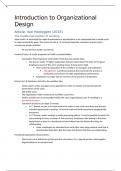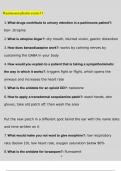Summary
Summary introduction to organisation design/ Introduction to Organizational Design: Lectures + Book + Articles
- Course
- Institution
Summary - lectures - Readings: Kuipers, H., van Amelsvoort, P., & Kramer, E. H. (2020). New ways of organizing: Alternatives to bureaucracy. Leuven: Acco. Chapters 5-14; 16-18 Van Hootegem, G. (2015). Total Workplace Innovation. The paradigm that will change the organization. Acco: Leuven �...
[Show more]




